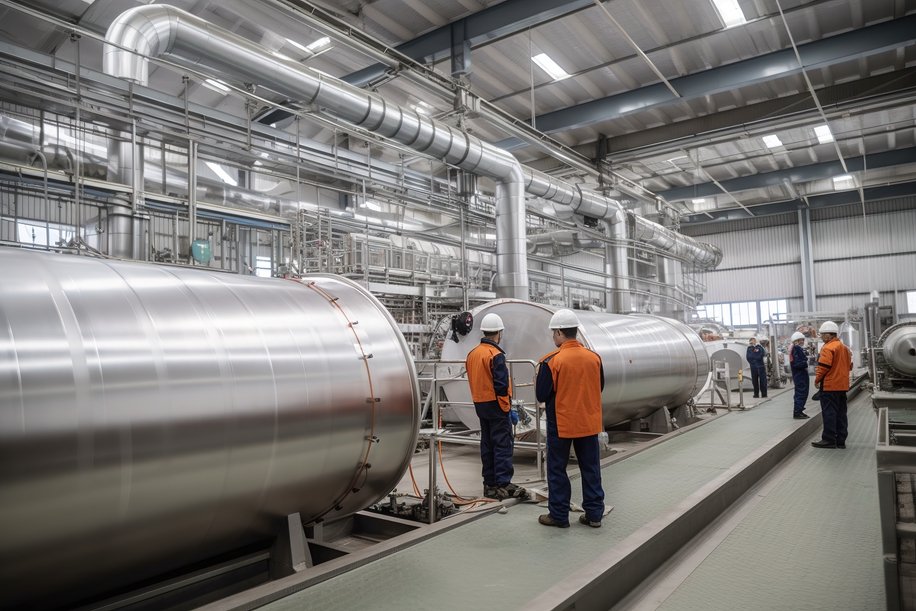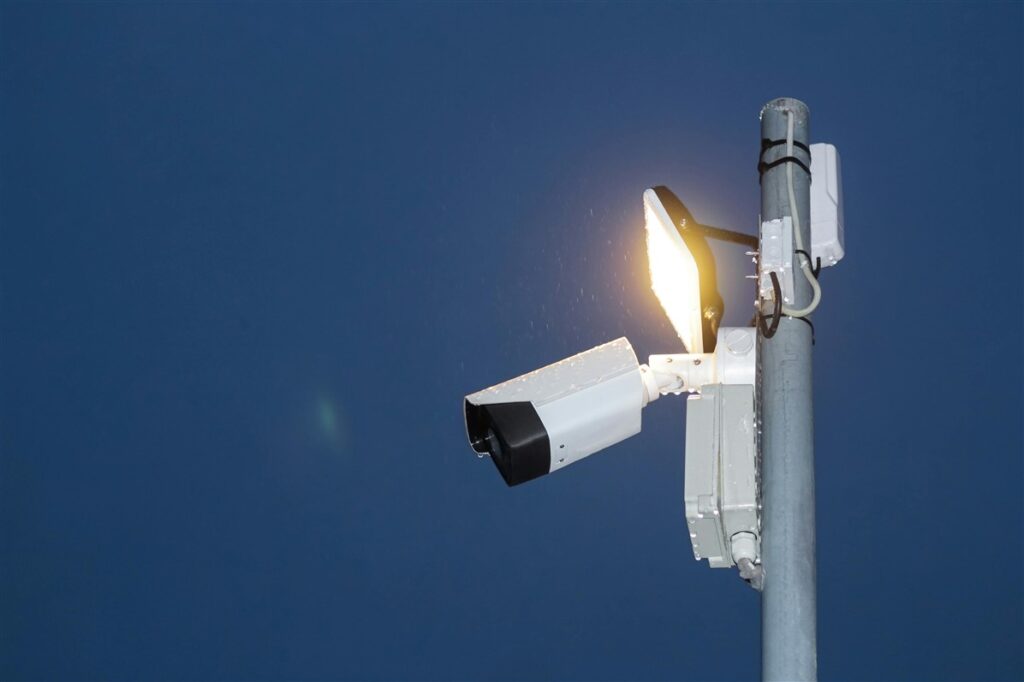5 most common electrical problems in factories
Manufacturers rely heavily on electricity, often grinding to a halt if electrical problems occurs. What's more, serious electrical faults can trigger a fire or explosion, leading to injuries or, much worse, fatalities.
As a plant or production manager, you don't need to understand how to fix your factory's electrical faults yourself – that's our job.
However, it is beneficial for you to understand how faults can happen, the likelihood of them occurring and how to minimise the risk.
In this article, we're looking at five common electrical problems you might experience.
1. Open circuit faults
The most common fault in any factory's electrics is the open circuit type. This happens when a component has insufficient voltage to power it correctly, leading to part or whole circuits shutting down.
Fortunately, while faults of this kind can occur regularly, they are among the easiest for an electrician to recognise and resolve. The cause is often open coils, or loose terminals or connections. They are relatively simple to locate and fix, so you'll have your equipment up and running again quickly.
2. Short circuit faults
These types of electrical failure are trickier to track down than open circuit faults. They tend to occur when the insulation around a conductor deteriorates. The electrical current is either grounded or routed to an incorrect conductor, blowing a fuse or triggering a circuit breaker into action.
Due to the harsh environment and high demands, electrical wiring in factories requires rigid insulation, including jacketing and fillers. The stronger the insulation, the slower it will deteriorate, reducing the chances of a short circuit.
While not as common, you may find faults with the actual wiring itself – perhaps due to age or it not being wired correctly (for example, a faulty plug or power cord). And the moment your system detects danger, it will short circuit.
3. Voltage issues
All electrical equipment has a voltage setting. If the voltage exceeds the limit – known as a surge – it can overheat components within the equipment, causing damage and reducing its lifespan considerably.
A surge can also cause automatic protection mechanisms to crank up, causing a systems crash.
On the other end of the scale, if the voltage is insufficient – known as a sag or dip - it can prevent equipment from operating as it should. For example, causing a relay mechanism to fail and stop the motor from working efficiently, burning it out. Longer-term voltage reduction is known as a brownout.
There are several causes for sags and surges. Common causes of sags are direct online starting of large motors and switching on large loads. Surges can be caused by an interruption in the flow of electricity followed by a short or when a sudden increase of voltage is sent through a power system from internal or external forces.
4. Mechanical failure
Unfortunately, when a major piece of equipment fails, it's likely caused by a defect – which is impossible to predict in advance – or a component reaching its end of life. Excessive heating or corrosion can force the latter to occur way sooner than expected.
Manufacturing equipment is complex, and both defects and part failures are tricky to detect. It can take significant time to troubleshoot and pinpoint an issue, and that's why regular machine maintenance, suitable lubricants, and testing are crucial to picking up errors and preventing a machine failure.
5. Systems failure
Most factories nowadays rely on smart technical systems to operate at high speed on demand. Computer-Aided Manufacturing (CAM) is the preference for many big businesses to speed up production and remove the risk of human errors or accidents.
Industrial computers and AI ensure operational efficiency, but they rely heavily on electricity. Working constantly, systems can quickly overheat. Position them in the wrong place, and a few knocks will soon see components broken or damaged.
How can you manage and minimise electrical failure?
As with many business processes, taking a preventative approach is much better than being forced to react when something fails – and it's no different with your electrics. There are several ways to help reduce the risk of electrical faults in your factory.
Implement robust systems and processes
Unfortunately, there is little you or your electrician can do to prevent surges originating outside your facility, but you can implement systems to react accordingly and minimise the damage, including:
• A voltage optimisation system to monitor and manage the energy levels.
• Power line conditioners and uninterruptible power supplies (UPS).
• Sufficient insulation to protect your electrical wiring long term.
• An ongoing support plan including regular electrical inspection and planned maintenance.
Keep your machinery updated and maintained
Faults can easily occur when your machinery is outdated or not cared for correctly. To avoid unnecessary downtime caused by electrical faults, always:
• Ensure you're using efficient machinery that doesn't use excessive power and impact your supply.
• Manage your power more effectively with energy-efficient motors and variable speed drives.
• Maintain machinery with regular cleaning and lubricants to keep parts moving freely, preventing malfunctions.
Protect your computer systems
If your factory relies on CAM systems, make sure you're doing all you can to protect them from damage and overheating.
• Use robust hardware and components explicitly designed to operate in harsh industrial environments, shock and heatproof, and with a long life span.
• Mount computers in a place where they won't be accidentally knocked or damaged by people or liquids.
• Servers should be rack-mounted and stored in a room with plenty of cooling.
Only use a trusted electrical contractor
Electricity is dangerous and can be fatal. It should not be underestimated, and you should certainly not cut corners by using underqualified contractors.
AES offers all the electrical contracting services you would expect, coupled with specialist services specifically to keep manufacturing businesses safe.
We can detect and rectify electrical faults, conduct machine risk assessments and inspections, install, maintain and service any electrical equipment, and we are CompEx accredited, allowing us to work in hazardous areas.
If you'd like to learn more about how AES can keep your equipment operational and your teams safe, get in touch.

Our guide to building energy management systems
Building energy management systems (BEMS) are systems that allow you to monitor, control, and optimise the energy used within your building. The phrase building energy management system (BEMS) is often used interchangeably with the phrase building management system (BMS), but there are some differences. A BEMS is focused on energy-related systems such as lighting, heating, […]
Read more
How far does power travel and what impact does distance have on performance
It’s easy to take our electricity supply for granted. We flick a switch and instantly have light or power. We don’t even think about it unless there’s an issue or an outage. But when there is an issue or outage, the impact can be significant. For manufacturers, even the smallest change in power can make […]
Read more
Why visibility of the production process is so important
Operational excellence, efficiency and quality are top priorities for almost every manufacturer worldwide. These things lead to improved productivity, happier customers and reduced waste – all of which result in increased profits. Visibility of the production process is the key to achieving these things. And manufacturers now have access to technology that can provide real-time […]
Read more
Will security lighting help to protect my staff?
Looking after the safety and well-being of employees should be a priority for any business. And while it’s not possible to mitigate every risk, there are measures you can take to improve their safety and security. One measure that is often overlooked is the installation of security lighting. When daylight disappears, visibility is reduced, increasing […]
Read more
Top 5 considerations when comparing electrical quotes
Budget is always a factor when you’re considering any type of upgrade, revamp, or maintenance work within your factory. But when it comes to electrical work, you have to consider more than just money. Don’t rush into accepting the cheapest electrical quotes without knowing exactly what you’re getting. Electrical work is not an area where […]
Read more
What is the role of companies in reducing our carbon footprint?
We should all be taking responsibility for protecting our planet and a big part of that is reducing our carbon footprint. But while it falls to all of us to do our bit, there is additional pressure on manufacturers, especially those with high carbon emissions. As an absolute minimum, these companies should ensure compliance with […]
Read more

